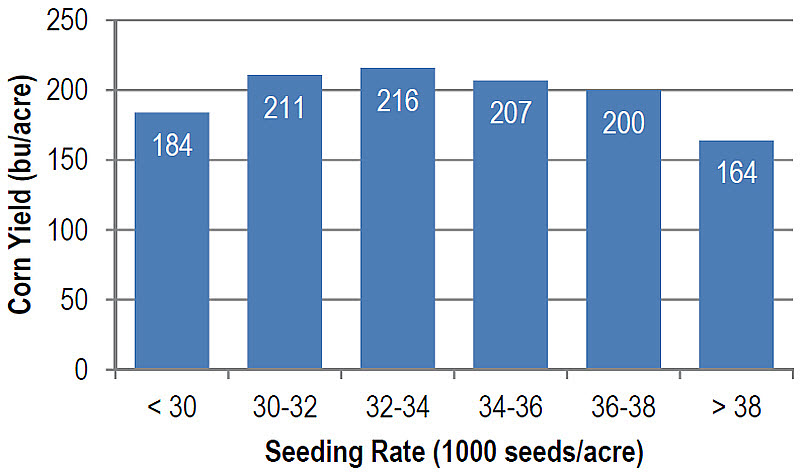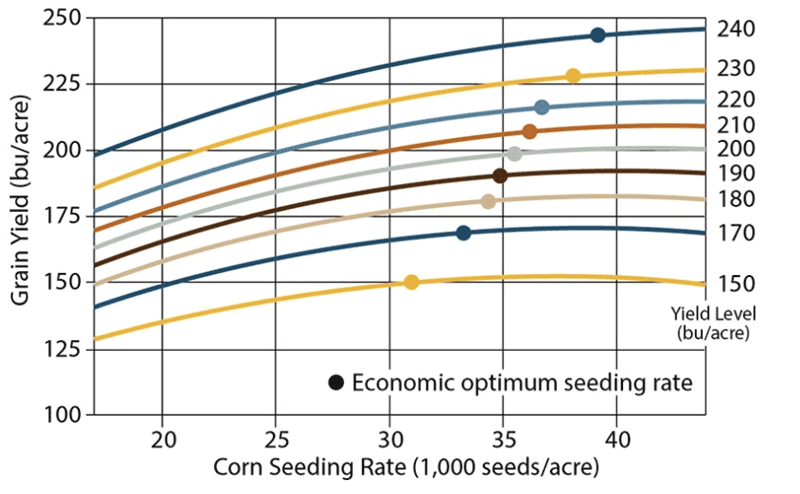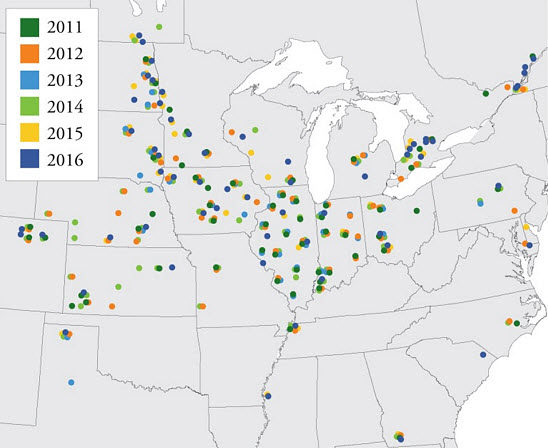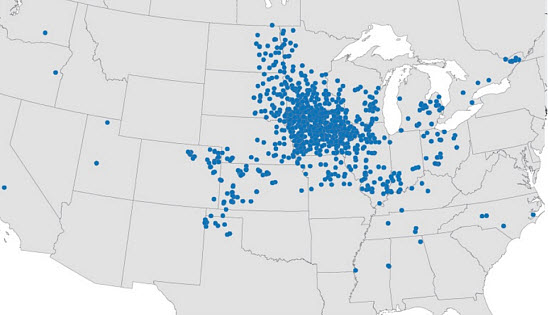Community Data vs. Trial Data for Corn Seeding Rate Decisions
Written by Mark Jeschke, Ph.D., Pioneer Agronomy Manager
Written by Mark Jeschke, Ph.D., Pioneer Agronomy Manager

Figure 1. An example of seeding rate data output for an individual hybrid from a farmer network service.
Aggregated community data can be a useful supplement to research data for making seeding rate decisions; however, IT IS NOT A VIABLE SUBSTITUTE for controlled-trial data in characterizing genetic differences in plant population response.

Figure 2. Corn yield response to population and optimum economic seeding rate by location yield level, 2009-2015.
(Averaged across all hybrids tested. Economic optimums based on a corn grain price of $4.00/bu and a seed cost of $3.00 per 1,000 seeds; assumes 5% overplant to achieve target population.)

Figure 3. Pioneer plant population research locations in North America, 2011-2015.

Figure 4. Pioneer GrowingPoint agronomy on-farm seeding rate trials at 1,378 locations in North America in 2015.
The foregoing is provided for informational use only. Please contact your Pioneer sales professional for information and suggestions specific to your operation. Product performance is variable and depends on many factors such as moisture and heat stress, soil type, management practices and environmental stress as well as disease and pest pressures. Individual results may vary.